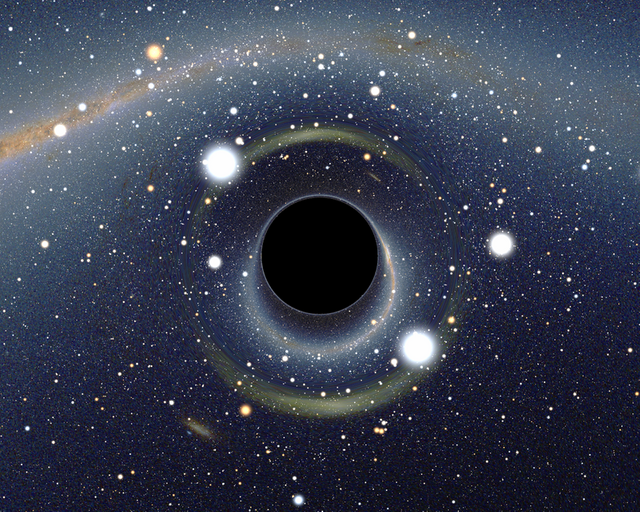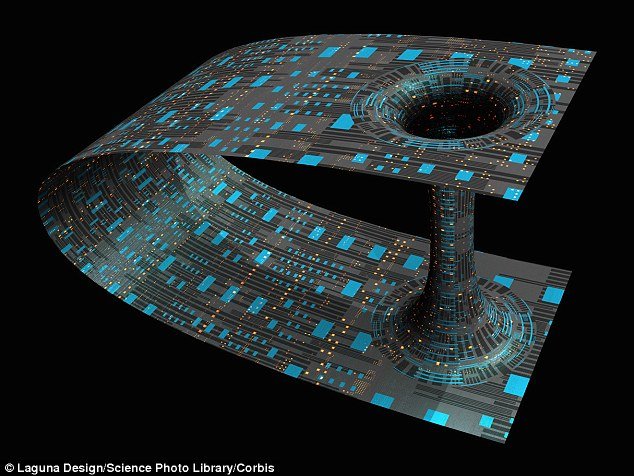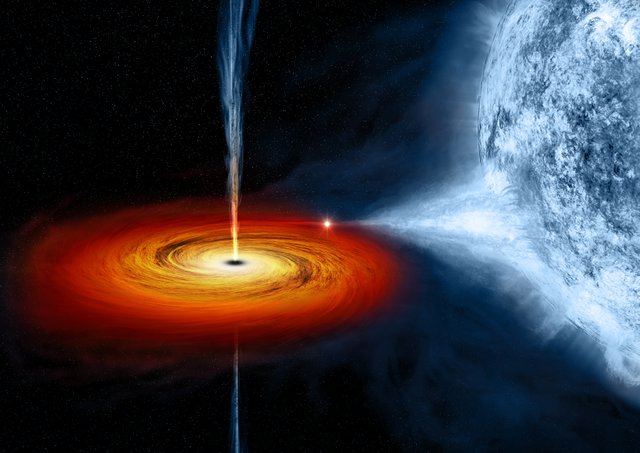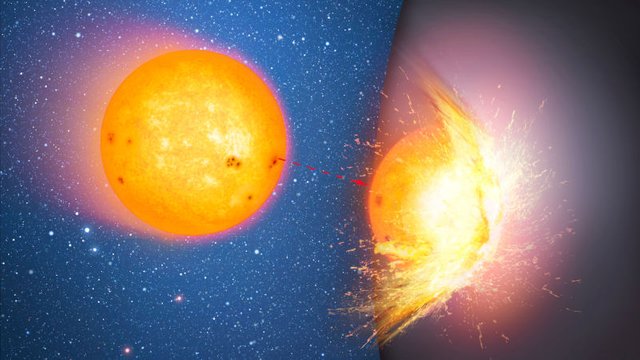- WHAT IS A BLACK HOLE?
Chances are, you've come across the idea of a black hole in science fiction books and movies, but these objects exist in real life too, and are just as fascinating. Black holes are objects in the universe so massive and with such strong gravity that nothing can escape them once trapped in their gravitational fields. In fact, most black holes contain many times the mass of our Sun.
But even though they are quite massive, an actual singularity that forms the core of the black hole has never been seen or imaged. We do know they are there by the effects they have on the matter surrounding them. And we are able to see the material that they suck in through their tremendous gravitational pull.
- THE STRUCTURE OF A BLACK HOLE
The basic "building block" of the black hole is that singularity. It's a pinpoint region of space that contains all the mass of the black hole. Then, there is the region of space surrounding the black hole from where light can not escape, giving the "black hole" its name. The "edge" of this region is called the "event horizon". This is the invisible boundary where the pull of the gravitational field is equal to the speed of light. It's where gravity and light speed are balanced.
The event horizon's position depends on the gravitational pull of the black hole.
- How do black holes form?
Cygnus X-1 was one of the first black hole candidates to be discovered and is still one of the star systems most reliably identified as containing a black hole. It is a double star system, with a massive brilliant young star orbiting a compact object. The compact object has a mass 8.7 times that of our sun. According to astronomers, such a massive object can only be a black hole.
You could make a black hole from anything if you could squeeze it small enough.
That’s because gravity depends on mass, and on how far you are from the center of a mass. By definition, if you’re close to a black hole, its gravity is so powerful that even light – the fastest moving stuff in the universe – is drawn into the hole That’s why black holes are black.
Black holes are part of the natural life and death of stars. A young star burns hydrogen at its core via thermonuclear fusion. Eventually, the star’s core becomes mostly iron, the most stable element in the universe. Fusion stops, as does the heat and outward pressure generated by fusion – which before that had been balancing the tremendous inward pressure of the star’s own gravity.
The core of a massive-enough star crushes inward and becomes a black hole.
Cygnus X-1 is the brightest persistent source of highly energetic x-rays in our sky. Astronomers think that the x-rays are caused by nearby clouds of gas and dust, which ionize as they fall into the black hole, showering the universe with radiation.
There may be countless black holes in the space of our Milky Way galaxy, made from collapsed stars. Scientists also think that black holes as massive as millions, or even billions, of suns form in roughly the same way. Supermassive black holes might lie at the hearts of many galaxies, including our Milky Way.
- How Do We Know Black Holes Exist?
Black holes are fairly new to physics and science. They are described as gravity gone mad, because it pulls everything towards it, and nothing can escape from its grasp. In theory they shouldn’t even exist, but we know they must be out there… somewhere.
Most of black holes form after a star have had a supernova, which is similar to a huge explosion so big we can’t even imagine. We call these kind of black holes; stellar black holes. When the star have blown off some steam, the core of the star can implode, meaning the star will pretty much suck itself back into a really, really small point. It’s basically the opposite of an explosion. This small point will be the centre of the black hole.
But we can’t really see a black hole with our naked eye. Which is sort of why they are called black and not white hole (a theory believes white holes do exist, but we’ll have to talk about that some other time). Not even light can escape from this black monster, which sort of makes it even more difficult to spot, since we need light to see stuff around us.
- So how do we know black holes exist if we can’t see them?
We believe there is a black hole in the center of our galaxy eating everything in its path (don’t pack your bag just yet, the Earth is far out in our galaxy and the black hole does not pose a threat to us), we call this a supermassive black hole, quite frankly because it’s supermassive. The way we know this is by looking at the space around the black hole. We know the black hole is there because we can see the stars nearby it travel at an incredible speed.
You can imagine the black hole to act like the drain in your bathtub. When you open the drain, water will start moving in circles around it waiting for its turn to exit your bathtub. The same happens in space. The stars are pulled to the black hole by gravity, and orbits the black hole in circles around it, just waiting for their turn to be practically eaten by it.
Read more: 1




Hi! I am a robot. I just upvoted you! I found similar content that readers might be interested in:
http://earthsky.org/space/how-is-a-black-hole-made
Downvoting a post can decrease pending rewards and make it less visible. Common reasons:
Submit